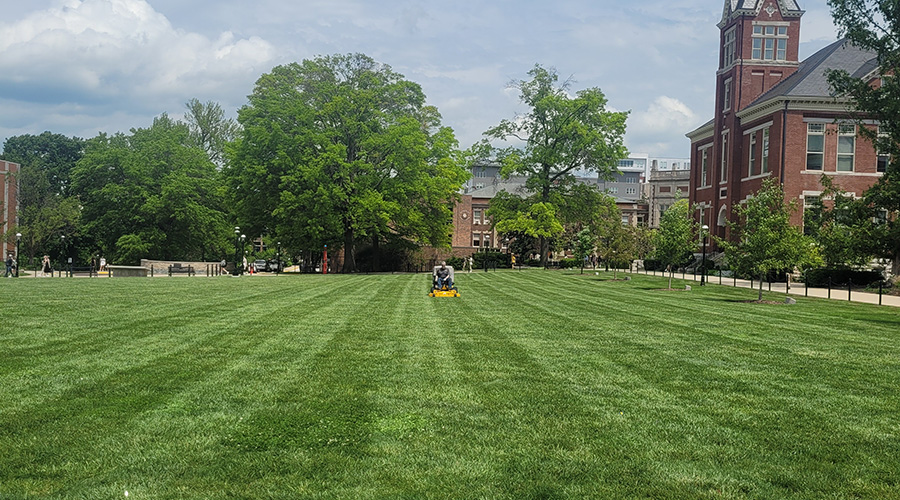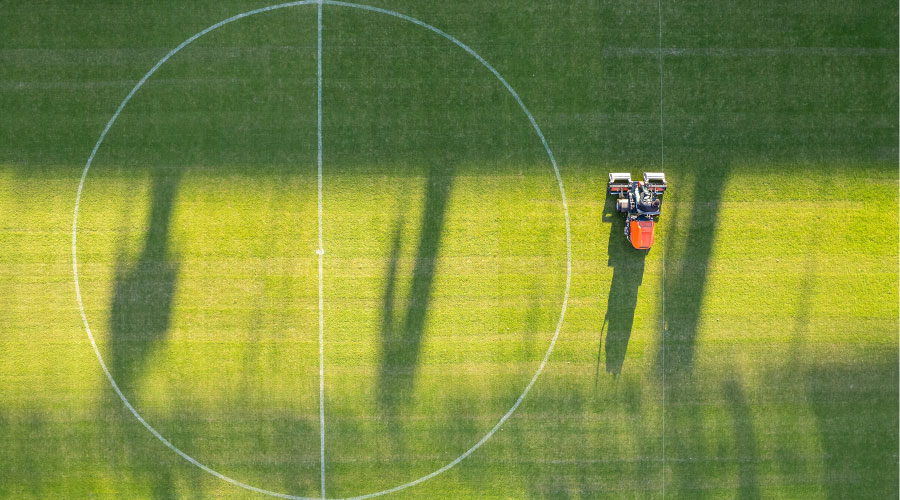Irrigation: Drip Systems Replace Pop-Up, Rotor Sprinkler Heads
Every turf conversion at UNLV includes a retrofit of the irrigation system. For these projects, the department generally specifies a drip system with sub-surface irrigation around trees. The drip systems replace pop-up and rotor sprinkler heads that waste water.
The university also uses a central control system linked to a weather station for real-time weather readings. The control system helps crews identify breaks in lines or irrigation heads, and it features flow sensors.
As is the case with herbicide use, crews need to pay attention to irrigation in the early stages of the plants' maturity.
By now, it has become second nature for UNLV to plan and carry out turf conversions. After more than 20 years of water-conservation efforts, the landscape and grounds department has streamlined a system that saves water, boosts the university's bottom line, and maintains the campus's aesthetic appeal.
Says Lynn, "Once you do one, you get pretty well used to the way it's going, and it falls into place."
What Is Xeriscaping?
Xeriscaping is becoming a more common practice among commercial and institutional grounds departments, but where did the term originate? According to the Facilities Management and Planning Web site from the University of Nevada, Las Vegas, xeriscape comes from "xeros," the Greek word for dry, and "scape," which means a picture or view of a scene. The Web site discusses the benefits of xeriscape gardens and offers an index of plants managers can specify for xeriscapes. For more information, visit facilities.unlv.edu/landscape/xeric.html.
|
Related Topics:














